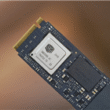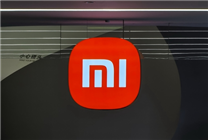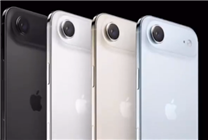Xiaomi’s 300,000-Hour Mobile Phone Testing: Clarifying Misconceptions
Summary:
- Recent criticism targets Xiaomi’s 300,000-hour mobile phone testing practice.
- The company defends its testing methodology as compliant with industry standards.
- Clarifications reveal the cumulative testing process involves multiple devices operating simultaneously.
Xiaomi has recently come under fire for its assertion that each new mobile phone undergoes an extensive 300,000-hour testing protocol before market release. This claim has sparked significant debate online, fueled by skepticism regarding the actual feasibility of such an extensive duration.
The Origin of the Controversy
The scrutiny surrounding Xiaomi’s testing methods peaked after various videos resurfaced, drawing from a presentation made in 2021 by company founder Lei Jun. During this event, Lei, alongside spokesperson Su Bingtian, showcased the stability testing laboratory, where a staggering 1,800 mobile devices operated simultaneously to simulate everyday usage scenarios, including popular applications like Douyin and WeChat, as well as traditional phone calls.
Critics quickly calculated that 300,000 hours divided by the number of days in a year implies a testing duration exceeding 34 years, thereby questioning the integrity of the claim. This misunderstanding highlights a need for clearer communication regarding testing methodologies in the tech industry.
Xiaomi’s Response
In response to the backlash, Wang Hua, Xiaomi’s General Manager of Public Relations, clarified the nature of the 300,000-hour testing claim. He emphasized that this represents a cumulative figure achieved through the use of numerous test machines over several months in simulated environments.
“The so-called 300,000-hour test is an industry-standard statement,” Wang stated. He further explained that when multiple devices are tested concurrently, achieving a total testing time of 300,000 hours for a single model becomes feasible in a much shorter time frame. Specifically, testing 1,800 devices collectively can reach a total of approximately 302,400 hours in just about seven days.
Understanding Concurrent Testing
For clarity, Wang elaborated that such simultaneous testing is a standard practice not just in Xiaomi but within the broader electronics industry. This practice allows manufacturers to assess multiple parameters and functionalities of mobile devices under real-world conditions, ensuring robustness before they hit the market.
The misconception seems rooted in a misunderstanding of the mechanics of concurrent testing versus traditional single-device testing. Wang pointed out that those criticizing Xiaomi might not grasp that testing can occur simultaneously across various devices, thus accumulating time in a way that doesn’t adhere to linear interpretations.
The Broader Implications of Misinformation
The situation brings to light a broader concern regarding misinformation in the digital age. Wang noted that many individuals may not possess the technical knowledge to dissect such claims, resulting in widespread sharing of misleading narratives. He expressed concern that this phenomenon can lead to unfounded doubt among potential customers, undermining trust in innovative brands like Xiaomi.
Moreover, it serves as a reminder of the necessity for tech companies to communicate clearly and effectively about their processes. As consumers increasingly rely on social media and other digital platforms for information, the potential for misunderstandings grows.
The Impact on Consumer Perception
Despite their attempts to clarify, Xiaomi’s reputation may still bear the brunt of perception shaped by viral content. Wang stated that, “The people behind this negative narrative may not believe that their actions are harmful; they are merely affecting those who lack the ability to differentiate facts from misleading information.”
The importance of digital literacy is underscored in this context, as consumers must develop the ability to critically evaluate information and discern facts from sensationalism.
Conclusion
Xiaomi’s extensive 300,000-hour testing claim, while seemingly controversial, reflects standard practices within the competitive mobile phone industry. By employing simultaneous testing across multiple devices, the company aligns itself with industry benchmarks aimed at ensuring quality and reliability.
As the online discourse continues, it becomes crucial for both companies and consumers to cultivate an environment where accurate information prevails. This ensures that manufacturer claims are not only understood but appreciated, fostering trust in technological advancements that shape our lives.
In the end, Xiaomi’s approach to mobile phone testing is not just a statement of product endurance; it’s a commitment to transparency and quality that defines the innovative spirit of the brand. As technology continues to evolve, clear communication will be essential in navigating the complexities of consumer perceptions and expectations.








